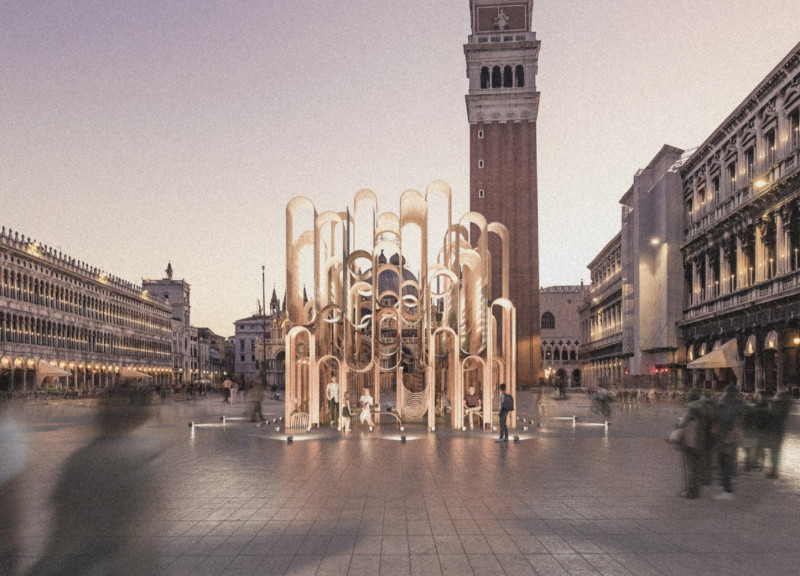5 key facts about this project
The primary function of "The Symphony of Timberland" is to serve as an adaptable venue for performances, events, and communal activities. The design fosters engagement by inviting visitors to navigate through its interactive spaces, while also offering zones for rest and reflection. This multifunctionality encourages diverse uses, making it a significant addition to the existing fabric of the Piazza.
One noteworthy aspect of this project is its modular and fluid design approach. Each component can be rearranged or repurposed according to the needs of specific events or gatherings. This flexibility allows the structure to respond effectively to different audience sizes and functions, distinguishing it from more static installations. The emphasis on timber not only underscores sustainability but also enhances the acoustic properties, creating a warm and inviting atmosphere conducive to performances.
The architectural design incorporates reflective surfaces and polycarbonate panels. These elements facilitate the interaction of light within the space, creating a dynamic visual experience while maintaining transparency and continuity with the outdoor environment. The project’s sculptural form, reminiscent of musical notation, reflects its thematic focus on rhythm and harmony, reinforcing its identity as a cultural hub.
Exploring "The Symphony of Timberland" further, specifically through its architectural plans and sections, provides valuable insights into the intricate relationships between its form, function, and the historical context of Venice. The design illustrates a contemporary architectural perspective that respects tradition while addressing current social needs. For a comprehensive understanding of this installation and its unique contributions to urban space, readers are encouraged to review the detailed architectural designs and ideas presented.























